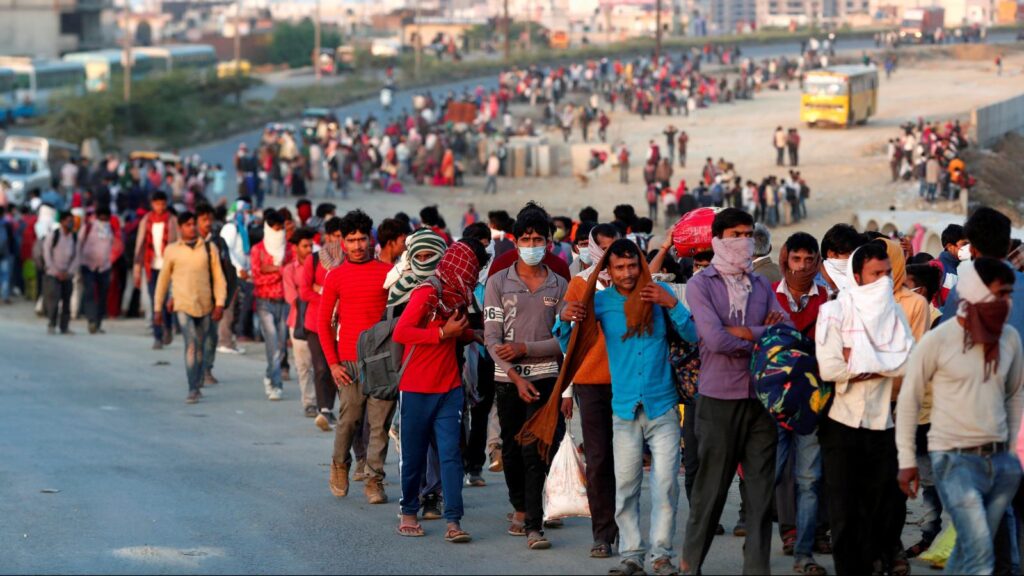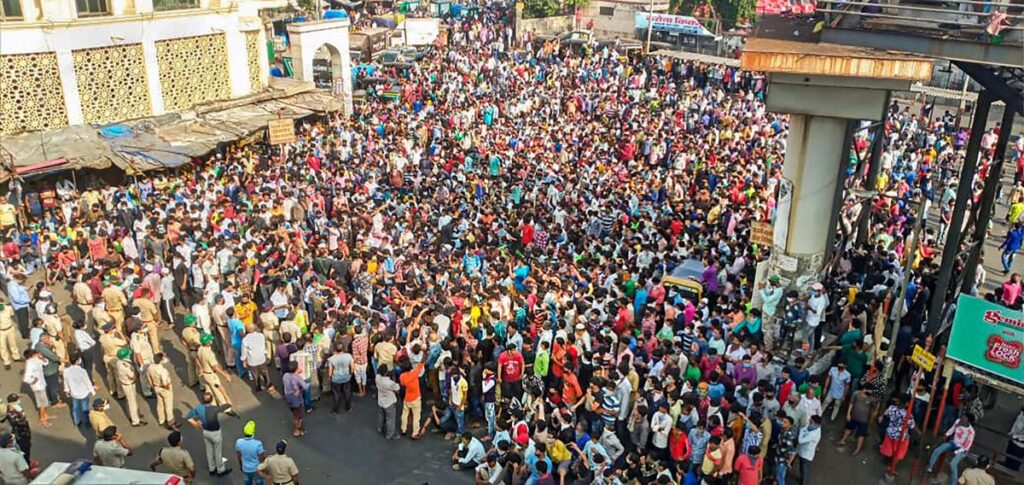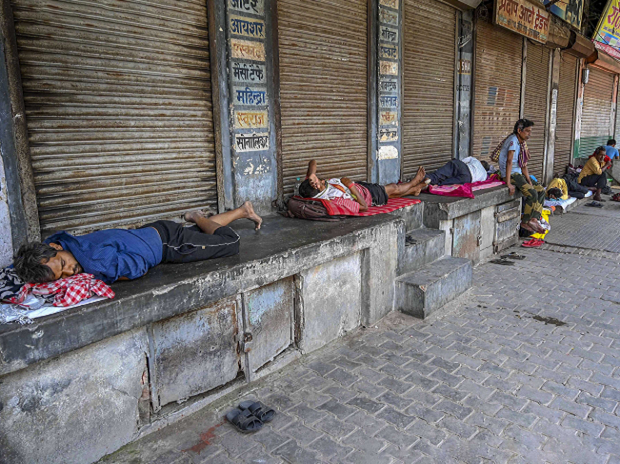Prof. R. K Panda

The outbreak of coronavirus and subsequent imposition of lockdown by the Prime Minister on 24th March 2020 banned almost all the economic and social activities including people’s movements in the country. The migrant workers employed in different establishments in the cities and metropolises have been pushed out of work resulting in losing their earning and living. Without work and earnings, they are thrown out of shelter by the owner/ contractor who hired them and provided accommodation. Thus, being shorn-off job, food and shelter these migrant workers are found stranded at railway stations, bus stops and road side highways. All that these migrant workers want is a return to their native villages in remote and far-flung country-sides.
No doubt, to contain the spread of the pandemic, the need for lockdown and closure of all types of transport network in the country cannot be questioned. Yet a serious exercise on the post-lockdown impact on the lives and livings of the vast number of these migrant workers would have been thought out with follow-up action plan to meet the eventualities. No doubt the central and various state governments have made some belated efforts to provide relief measures to these stranded migrant workers, yet their plight continues unabated as their demand far exceeds the available supply of relief materials.
Recently, however the governments of different states have initiated measures to transport these people to their villages, yet their trouble does not end here. Since there is apprehension that these people might be carrying the corona virus within themselves, they will have to undergo the prescribed screening procedure including stay in the state sponsored quarantines before letting them go to their homes.

In view of the extremely distressful situation in which the migrant workers are found struggling, it seems obvious to know who are these migrant workers and why are they in such a distressed situation? To answer these key questions, we may say that these people belong to a large section of the rural poor who are mostly landless, do not have regular work and livable wages to depend upon, have migrated to cities and metropolis in search of employment and higher earnings leaving their families behind in the villages.
These migrant workers constitute a large chunk of urban poor who are engaged in constructing houses, plumbing toilets, delivering newspapers, serving in eateries, cooking food and a host of other activities. The World Bank has recently estimated the number of migrant workers in India to nearly 40 million. As stated by the Ministry of Labour and Employment in its report on the trend in the inter-state labour migration the country, it has increased at an accelerated rate during the last decade.
In economic literature, migration is positively linked with economic development. As such higher rate of internal migration is a good indicator of higher economic growth of the Indian economy. Since the country is targeted to achieve $5 trillion economy status by 2024-25 and accordingly there is need to accelerate the per annum GDP growth rate within this short time period and this will certainly trigger workers’ migration from poorer states to industrial hubs of more developed states in future.

It is to be admitted that the outbreak of the corona pandemic has exposed the weaknesses of the government in dealing with the problems of the migrant workers. Although there have been many labour laws enacted by the Government of India after independence, the wages received by the migrant workers are less than the minimum wages under the Minimum Wages Act, 1948. Besides these workers suffer from poor working conditions with no safety nets to protect them from various exploitation and unforeseen contingencies such as outbreak of COVID-19.

Above all, the implementation of existing labour policies for the migrant workers is found to be mostly ineffective and this is due to non-availability of reliable data about the employment of these workers in different industries, organizations. The Government of India has to take up the task of developing a reliable database for better management of the migrant workers on a priority basis.
(The writer is a former Professor of Economics at Utkal University, Bhubaneswar)





















